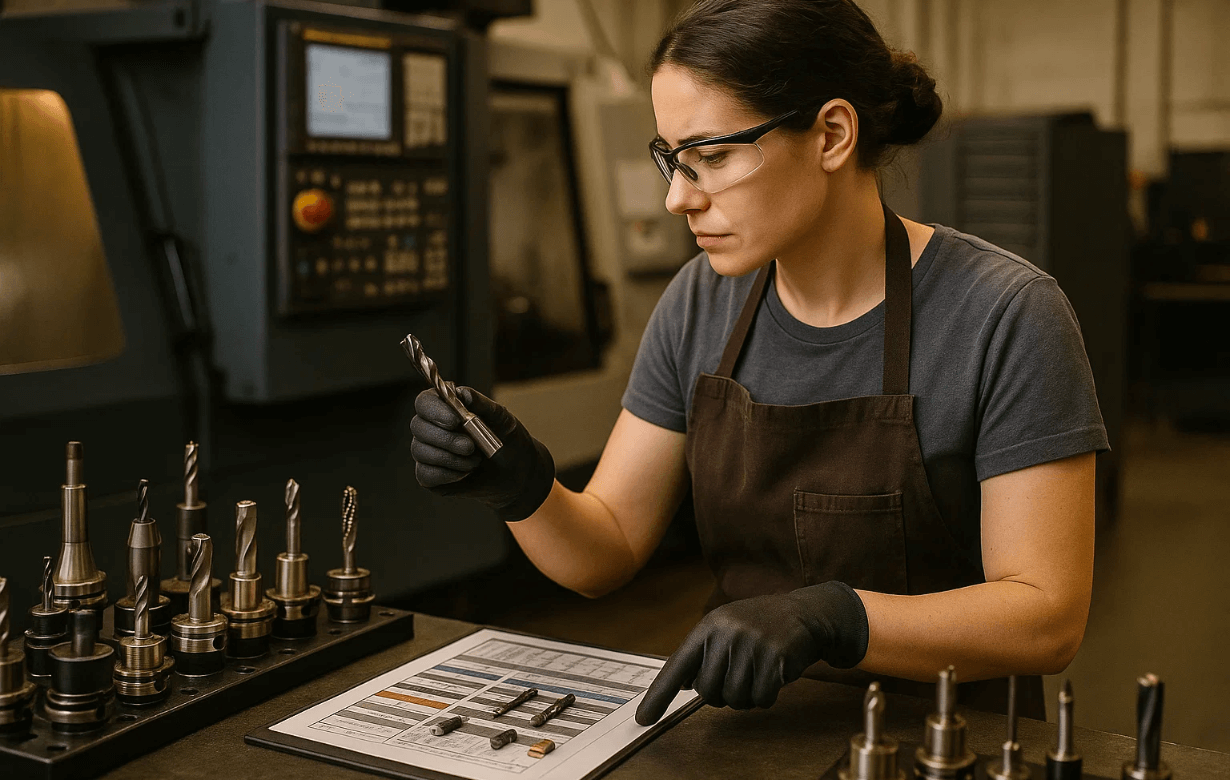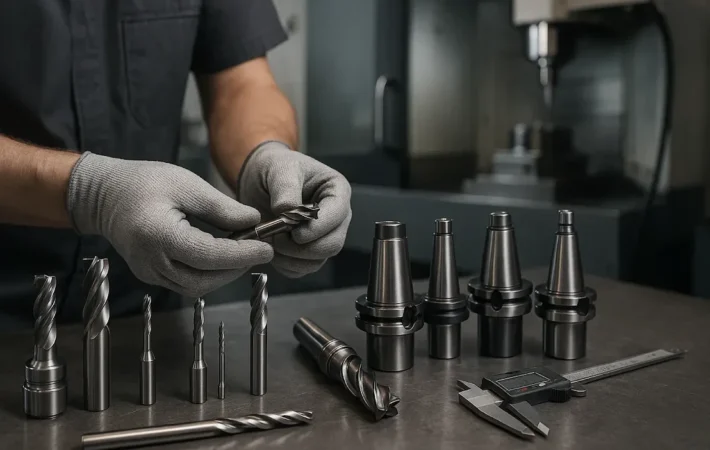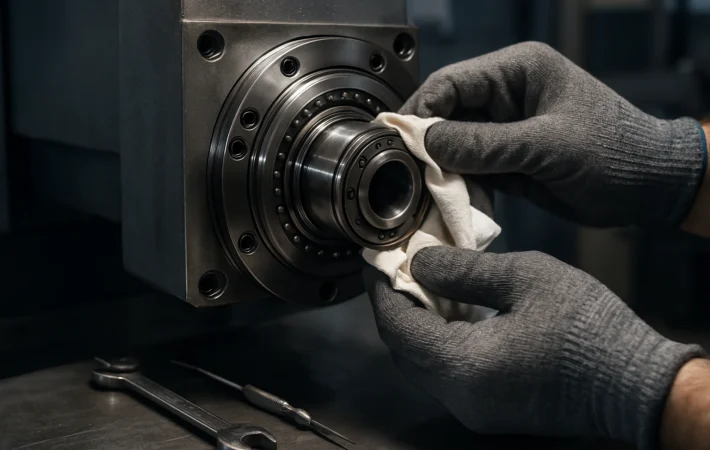CNC machines are wonder toys that can help you change a raw workpiece of different materials into a complex geometrical shape that is needed for other commercial purposes. All of these get done with minimal human effort and no need for people to cut the piece with a hammer or an axe. All of these works are now being done by the cutting tool of the CNC machine. The cutting tool can help you cut the raw workpiece into a desired shape tool by understanding the commands of the G-code. But there’s one catch: there are several tools that can be used by CNC machines and which tool is needed for the particular machining is mainly selected as per the material being machined. So, if you want to find out which cutting tool is perfect for which material then continue with us till the end and you will get to know.
The Interplay Between Tool and Material:
A lot of things about the tool and the material both help in determining which material needs which tool for the whole machining process. Here’s a detailed description of all those features:
Knowing material features:
Here are some important characteristics of the material you need to know before you start machining:
- Workpiece material hardness and abrasiveness: The first important factor that helps in determining which tool you need to select for machining, is the hardness and the abrasiveness of the workpiece material.
- Hardness: Harder materials like titanium or ceramics need more wear resistance and harder tools while softer materials like aluminum and soft steels can be machined using less robust but sharper cutting tools.
- Abrasiveness: Some materials are not that hard but they are abrasive due to the inclusions like silicon in aluminium and carbides in cast iron which accelerates the tool wear and needs tools that have excellent abrasion resistance.
- Workpiece Ductility: There are different ductile materials like copper or aluminum, that tend to produce long and continuous chips which can further lead to chip entanglement and also built up edge formation on the tool. For materials like this, one needs tools that have geometries that promote chip breaking and help in faster chip evacuation.
- Workpiece material thermal conductivity: Materials that have lower thermal conductivity like superalloys and titanium, tend to retain heat in the cutting zone which leads to rapid tool wear and potential material deformations. So this material needs tools with high hot hardness and efficient chip evacuation features to dissipate heat.
Knowing cutting tool features:
Here’s a detailed chart for this explanation:
| Tool Materials | Key properties | Typical applications |
| High-Speed Steel (HSS) | Tough, affordable, good at lower speeds | General use, mild steels, softer metals |
| Carbide | Hard, wear-resistant, excellent at high speeds | Hard steels, cast iron, non-ferrous metals |
| Ceramics | Extreme heat resistance, brittle | High-speed turning, hard materials |
| Cubic Boron Nitride (CBN) | Very hard, heat-resistant, expensive | Hardened steels, superalloys |
| Polycrystalline Diamond (PCD) | Ultra-hard, wear-resistant, not for steel | Non-ferrous, abrasive composites, plastics |
Knowing the tool coating:
Here are the different tool coatings that you should be aware of:
- TiN (Titanium Nitride): This is the general-purpose coating for HSS and carbide, which offers reduced friction and better hardness.
- TiAlN (Titanium Aluminium Nitride): This coating provides extremely high hardness and oxidation resistance to the cutting tool, making it ideal for dry machining.
- ZrN (Zirconium Nitride): This coating is great for non ferrous metals and prevents built up edges.
- AlCrN (Aluminium Chromium Nitride): It provides better thermal stability and wear resistance, and is often used for super alloys and stainless steel.
- AlTiN (Aluminium Titanium Nitride): It has a great hot hardness, which is particularly important for hard to machine materials.
Knowing tool geometry:
To determine the best tool, you need to understand the different tool geometries. So, here’s a list of them:
- Helix Angle: A higher (45°+) helix angle helps in faster chip evacuation and is ideal for deep pockets and softer materials. Lower (30° or less) provides stronger cutting edges which is suitable for harder materials.
- Flute Count: Fewer flutes (2-3) help in better chip clearance and are a better option for soft materials while more flutes (4-6+) provide improved surface finish and are used for harder materials.
- Rake Angle: Positive rake angles help in reducing the cutting force and improving the chip flow while negative rake angle increases the edge strength and ensures uninterrupted cuts while machining.
Final Tool Selection Process:
Now here are the final steps that you need to take to select the right tool for the machining of any of your materials:
- Define the machining operations: Which machining operation you are going to conduct also helps in determining the tool you are going to use for the machining purpose. Other than that it is also very important to recognize, what are the tolerance requirements and the required material removal rate (MRR).
- Consider machine capabilities: In the next step, you need to figure out the capabilities of the machine like what is the spindle speed range. What is the machine’s power and rigidity? And does the machine have coolant capabilities? Just before you select the tool.
- Select the tool: After you solve all these issues, you need to select the right cutting tool for the CNC machining operations, the optimal tool coating, and determine the right tool geometry.
- Do a test run: Once all of these things are done you should just do a small trial run to check if there is any chance of any accidents or machining problems and then go for the final run after being sure of the safety.
Examples of Practical Tool Selections:
| Workpiece Material | Recommended tool material | Geometry and coating suggestions |
| Mild Steel | HSS or Carbide | Standard geometry, TiN coating |
| Hardened Steel | Carbide, CBN | Low helix, AlTiN coating |
| Aluminum | HSS, Carbide | High helix, polished, uncoated or TiB2 |
| Cast Iron | Carbide, Ceramic | Standard/low helix, TiAlN coating |
| Titanium | Carbide | Rigid geometry, AlTiN coating |
| Composites | PCD, Carbide | Sharp edge, diamond coating |
You shall still take recommendations from machining experts before selecting the tools, coating, and geometry.
Conclusion:
Selecting the right cutting tool is very important to do machining in the right way, and get your desired product ready out of any material using those tools. Other than selecting the right material, selecting the right coating and geometry is also very important and you should take care of all that for optimal machining experience.
If you are someone who is planning to buy used CNC machines, then you can check our collection at MachineStation. If you can’t find the right fit there, then let us know your requirements in the Machinery Locator and we will try to help you out.






